The key of G minor contains the notes: G – A – Bb – C – D – Eb – F

When assembled in order the notes form the G natural minor scale. For a quick breakdown of musical keys on guitar click here.
If you would like to understand the difference between major and minor scales, click here.
Why does the Key of G minor include flats and not sharps?
The presence of flats or sharps in a key signature (the notation symbol placed at the beginning of a musical piece to indicate which notes should consistently be played as sharps or flats) is determined by the specific major key that serves as the starting point for deriving the relative minor key.
In this case, since the relative major key (Bb major) has flats in its key signature, the relative minor key (G minor) also uses flats.
The G Minor Scale Step Pattern

The G minor scale (like all minor scales) follows the step pattern of:
whole, half, whole, whole, half, whole, whole
The G Minor Scale For Guitar
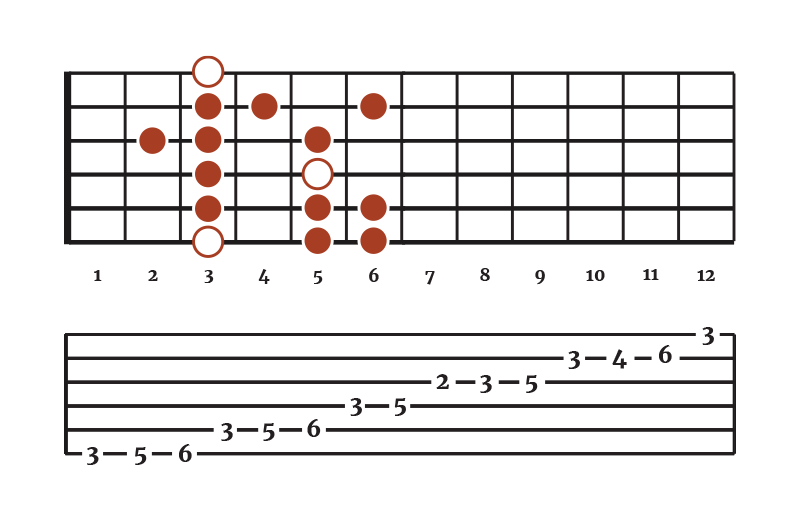
The G minor scale (like all minor scales) follows the step pattern of:
whole, half, whole, whole, half, whole, whole
Keep in mind, that scales can be played in many different ways.
Chords In The Key Of G Minor
All chords within a minor key such as G minor follow a pattern of:
| min | dim | Maj | min | min | Maj | Maj |
| g | a | Bb | c | d | Eb | F |
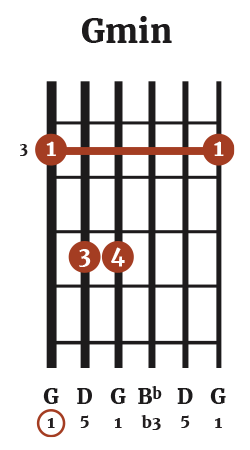
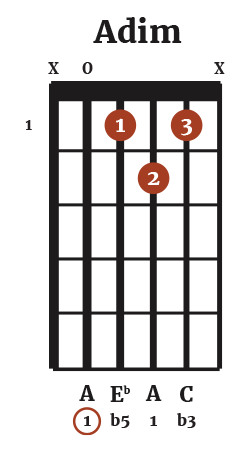
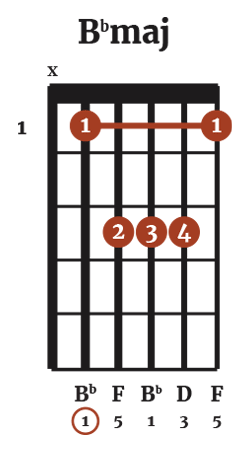
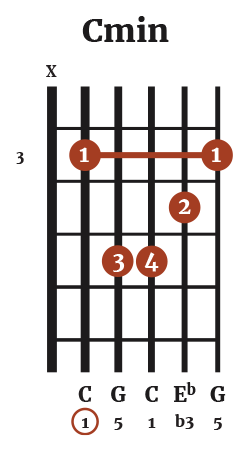
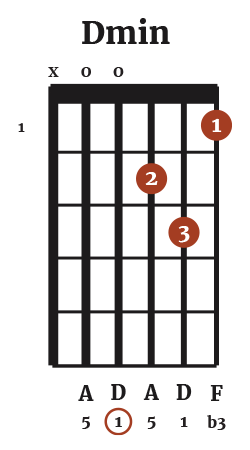
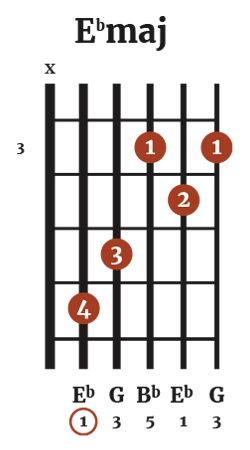
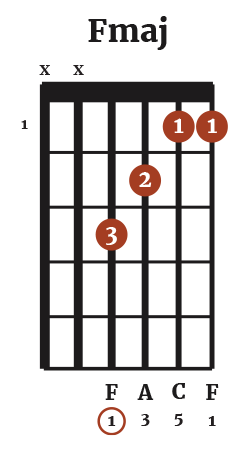
| Chord | Notes |
| g minor | G, Bb, D |
| a diminished | A, C, Eb |
| Bb Major | Bb, D, F |
| c minor | C, Eb, G |
| d minor | D, F, A |
| Eb Major | Eb, G, Bb |
| F Major | F, A, C |
7th Chords in G Minor
Seventh chords include the tonic (1st), third, fifth, and seventh scale degrees of a diatonic scale (a seven-note musical scale consisting of whole and half steps), unlike triads which contain just three notes.
The seventh chord quality (such as major, minor, diminished, or augmented.) can vary depending on the type of seventh interval used in the chord. There are several types of seventh chords, each with its unique sound and function in music.
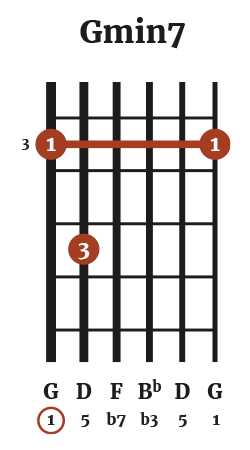
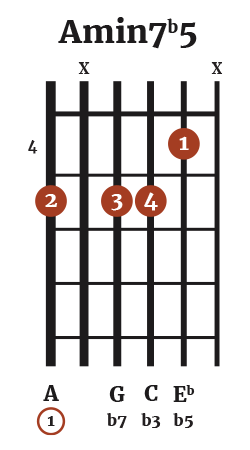
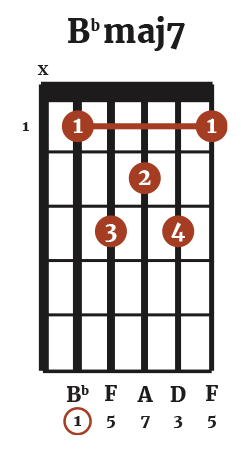
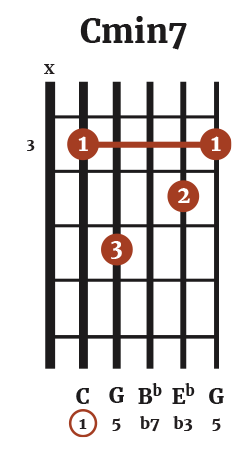
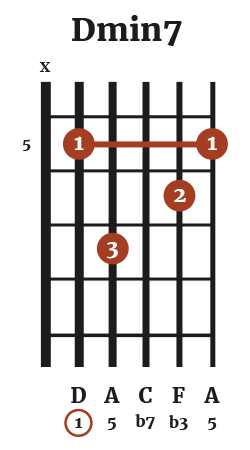
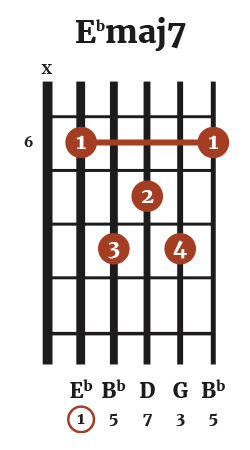
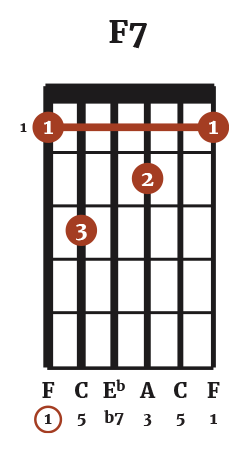
| Chord | Notes |
| G minor 7 | G, Bb, D, F |
| a diminished | A, C, Eb, G |
| Bb Major 7 | Bb, D, F, A |
| c minor 7 | C, Eb, G, Bb |
| d minor 7 | D, F, A, C |
| Eb Major 7 | Eb, G, Bb, D |
| F Dominant 7 (F7) | F, A, C, Eb |
Chord Function in G Minor
Chords can be categorized into three main functions: tonic, subdominant, and dominant. Tonic chords (i, VI) provide stability. Subdominant chords (iv, ii) introduce some tension but not as much as dominant chords (v, VII) which create the most tension and typically lead to a resolution.
| Tonic | Supertonic | Mediant | Subdominant | Dominant | Submediant | Subtonic |
| i | ii | III | iv | v | VI | VII |
| gmin | adim | Bbmaj | cmin | dmin | Ebmaj | Fmaj |
For example, The i chord (minor tonic) serves as the central point of stability, it’s home base for the key. As it is constructed on the tonic note of the minor scale (e.g., G in the key of G minor) returning to it provides resolution.
Alternatively, In the key of G minor, the dominant chord is d min which creates a strong pull back to the tonic chord, G minor, creating a sense of resolution when the chord progression resolves back to the tonic.
Common Chord Progressions In G Minor
| i – VI – VII | gmin – Ebmaj – Fmaj |
| i – VII – iv- VI | gmin – Fmaj – cmin – Ebmaj |
| i – v – VI – VII | gmin – dmin – Ebmaj – Fmaj |
| i – III – VII – VI | gmin – Bbmaj – Fmaj – Ebmaj |
| i – v – iv – VII | gmin – dmin – cmin – Fmaj |
Relative Major
The relative major refers to the major key that shares the same key signature as a minor key. In simple terms, they use the same set of notes, but their tonal centers (the tonic) are different e.g. the relative minor starts on the 6th scale degree of the relative major.
In minor keys, the relative major’s tonic note is the 3rd scale degree of the relative minor scale, meaning in the key of G minor, Bb Major is the relative major.
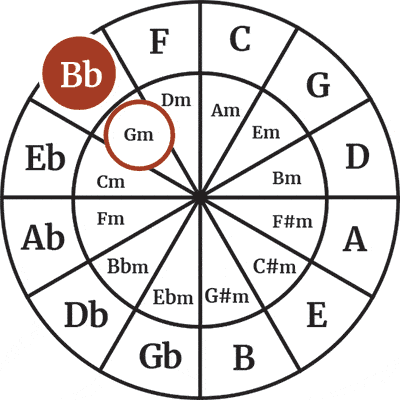
Resources
- PDF download showing the notes, scales, and chords in the key of F minor.
- Learn how to read chord charts
- Learn how to read guitar tab

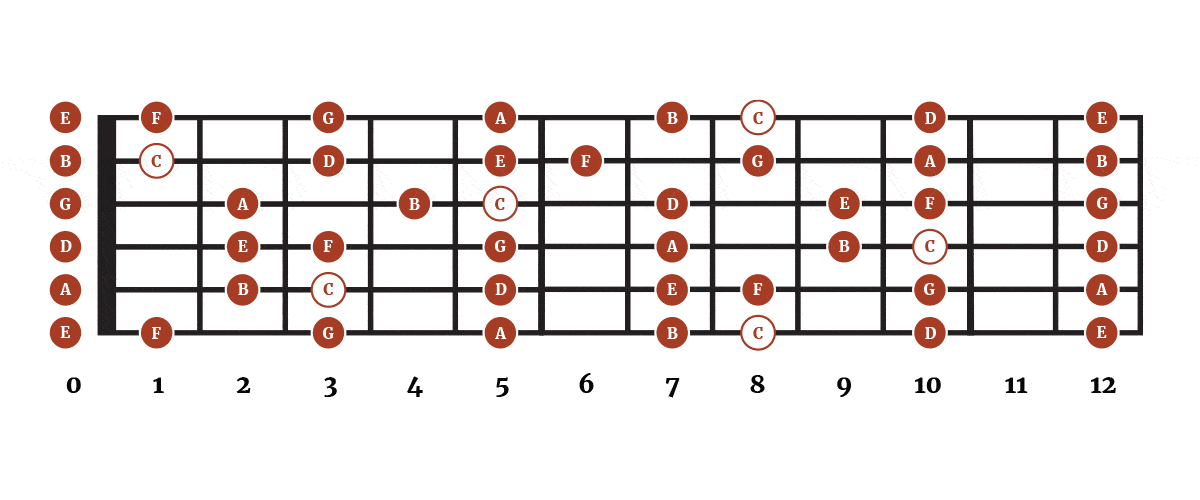
![Mastering Musical Keys on Guitar [Complete Guide] 3 Mastering Musical Keys on Guitar](https://theacousticguitarist.com/wp-content/uploads/2023/11/mastering-musical-keys-on-guitar.jpg)

